This article was co-authored by Carlotta Butler, RN, MPH. Carlotta Butler is a Registered Nurse in Arizona. Carlotta is a member of the American Medical Writers Association. She received her Masters of Public Health from the Northern Illinois University in 2004 and her Masters in Nursing from the University of St. Francis in 2017.
There are 11 references cited in this article, which can be found at the bottom of the page.
This article has been viewed 20,448 times.
A silent migraine refers to a migraine without a headache. While a typical migraine consists of four phases: prodrome, aura, headache, and postdrome, some people skip the headache phase.[1] Even without the pain associated with the headache phase, a silent migraine can still be debilitating. If you get silent migraines, learning about the condition may help you figure out ways to reduce the frequency or duration of your migraines. Your physician can recommend appropriate treatments available for you, though generally the treatments work on symptoms rather than the problem itself.
Steps
Coping With Migraines
-
1Get your rest. One way that people deal with migraines, even silent migraines, is to get extra rest. Some people sleep through the migraine, while others just rest in a dark room, as light can make aura worse for some people.[2]
-
2Ask about triptans. Talk to your doctor about the possibility of taking triptans. These prescription medications can help prevent or alleviate migraine symptoms. Triptans work by helping your brain produce more serotonin, which in turn decreases inflammation in your brain.[3]
- You take this medication after a silent migraine has already started. The earlier you take it during a migraine attack, the more effective it will be.
- Take your medication as directed by your doctor.
Advertisement -
3Consider taking hormonal birth control pills. Because hormone changes can lead to migraines, taking birth control pills may reduce the number of migraines you have. For some people, taking birth control may make the problem worse, so it really depends on your body and how it responds to the medication. Nonetheless, it's something you should discuss with your doctor, particularly if you often get migraines right before or during your period.[4]
-
4Ask your doctor about anti-nausea meds. If your silent migraines are accompanied by nausea or upset stomach, your doctor can prescribe a medication to help with the nausea. While these medications don't treat the migraine, they can help you deal with the symptoms.[5]
-
5Take pain medications as needed. Silent migraines by definition skip the headache portion of the migraine; however, if you have other pain associated with the migraine, you can take over-the-counter medications such as ibuprofen or acetaminophen.[6] Always follow the package instruction when taking these medications.
-
6Try taking B vitamins. Studies have shown that high homocysteine levels may lead to an increased chance of aura migraines. To combat this issue, one study suggests taking B vitamins may be helpful. Ask your doctor if this treatment is a good idea for you.[7]
- In the study, the participants took 400 micrograms of B12, 25 milligrams of B6, and 2 milligrams of folic acid.
Understanding Silent Migraines
-
1Learn what a "silent migraine" is. A silent migraine is when you have a migraine, but you skip the pain part of the process. In other words, you have other symptoms such as aura, but you don't actually get a headache. You may also go through the preliminary phases that many migraine sufferers go through, which are symptoms that warn of an oncoming migraine.[8]
- These types of migraines are referred to by many names, including a migraine aura without headache, an acephalgic migraine, an amigranous migraine, or a migraine equivalent.
- These types of migraines are treated similarly to other types of migraines.
-
2Know who's most at risk. Generally, you're more at risk for silent migraines if you had migraines with auras in your teens or 20s. Because silent migraines are still migraines, they tend to show up in people who've had migraines with auras in the past.
-
3Watch for the symptoms. The main symptoms of a silent migraine are auras, which can include vision changes such as halos or spots in your vision, blurry vision, cloudy vision, or shimmering vision. You might also see dark areas, flashes, or odd 3D effects.[9]
- You may also find you have problems with speech.
- Other aura symptoms include feeling tingling or numbness, feeling like you're on pins and needles, feeling weak or clumsy, and/or feeling dizzy or off-balance.
- You may also have mood swings, a loss of memory, hearing loss, stomach troubles, and/or confusion.
- Some people even get hiccups or have a distorted image of their bodies. Others may have less sensitivity to touch or hypersensitivity.
-
4Distinguish a silent migraine from a retinal migraine. Silent migraines are sometimes referred to as "ocular migraines" or "retinal migraines." However, these conditions are not interchangeable. Ocular migraines refer to silent migraines that affect the vision. Retinal migraines, however, are different. They usually only affect one eye at a time, causing blurriness or even temporary blindness.[10]
- If you experience migraine-like symptoms in one eye only, you should see an eye specialist.
Reducing the Frequency of Migraines
-
1Recognize your warning signs. About 40% of people have warning signs before a migraine hits. These warning signs can happen as quickly as hours before an attack, while other times it may be days, and they are collectively called the "prodrome" period. Learning to look for these symptoms may help you predict when a migraine is coming on.[11]
- Common symptoms of this period include tiredness, yawning, constipation, craving foods, frequent urination, and mood swings. You may also have muscle stiffness or neck pain.
-
2Reduce triggers. Some people find that certain things will trigger their migraines. For instance, stress or hormones (such as starting your period) can trigger migraines. Certain foods will trigger migraines in other people or just being too tired. Figuring out what your triggers are and reducing their occurrence can help with silent migraines.[12]
- While you can't reduce the frequency of some triggers, such as your period, knowing when migraines may happen can help you prepare.
-
3Keep a journal. One way to tell if you experience prodrome is to keep track both of common symptoms and migraines. Each night, make a note if you experienced any common prodrome symptoms. Also, make a note of when your silent migraines happen. You may notice a pattern that can help you predict your silent migraines.[13]
- It can also help to make note of possible triggers, such as being extra tired or starting your period.
-
4Work on being healthy. Some people find that maintaining a healthy lifestyle helps reduce the frequency of their migraines. That means eating a balanced diet of lean proteins, whole grains, fruits, and veggies. It also means getting enough sleep (generally 7-9 hours), exercising regularly (try for 150 minutes a week), and drinking enough water (your urine should be pale or clear). Also, try to limit your alcohol.[14]
References
- ↑ https://www.mayoclinic.org/diseases-conditions/migraine-headache/symptoms-causes/syc-20360201
- ↑ http://www.nhs.uk/conditions/Migraine/Pages/Introduction.aspx
- ↑ http://www.headaches.org/2007/11/19/facts-about-triptans/
- ↑ http://www.mayoclinic.org/diseases-conditions/chronic-daily-headaches/in-depth/headaches/art-20046729
- ↑ http://www.nhs.uk/conditions/Migraine/Pages/Introduction.aspx
- ↑ http://www.nhs.uk/conditions/Migraine/Pages/Introduction.aspx
- ↑ https://americanmigrainefoundation.org/living-with-migraines/types-of-headachemigraine/migraine-and-aura/
- ↑ https://americanmigrainefoundation.org/resource-library/silent-migraine/
- ↑ https://americanmigrainefoundation.org/living-with-migraines/types-of-headachemigraine/migraine-and-aura/
- ↑ http://www.mayoclinic.org/diseases-conditions/migraine-headache/expert-answers/ocular-migraine/faq-20058113
- ↑ https://americanmigrainefoundation.org/resource-library/timeline-migraine-attack/
- ↑ http://www.nhs.uk/conditions/Migraine/Pages/Introduction.aspx
- ↑ https://americanmigrainefoundation.org/resource-library/headache-journals/
- ↑ http://www.nhs.uk/conditions/Migraine/Pages/Introduction.aspx
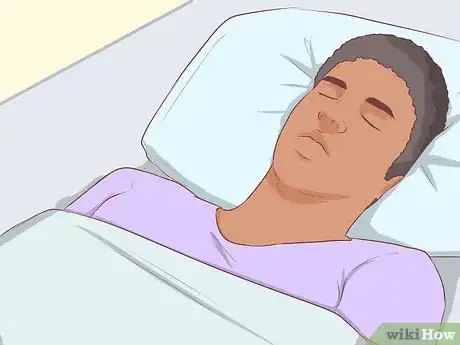

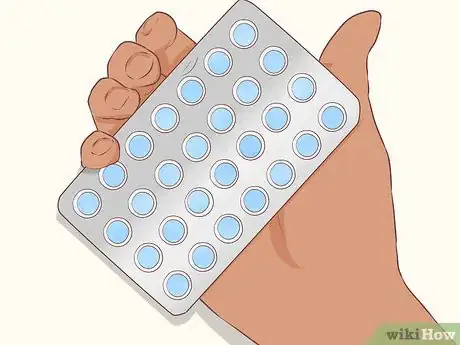




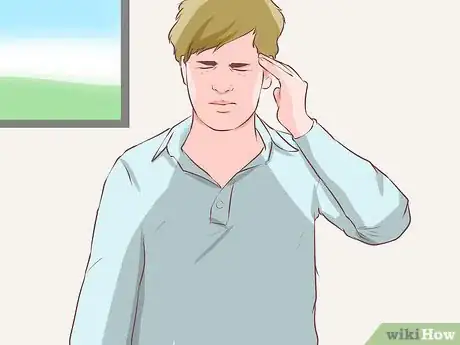


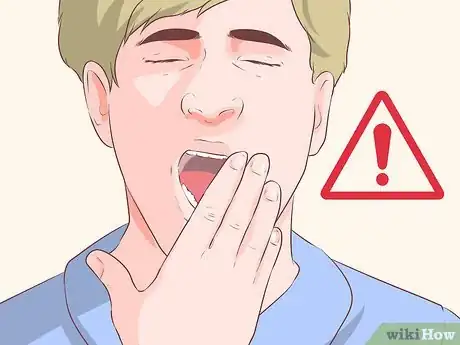
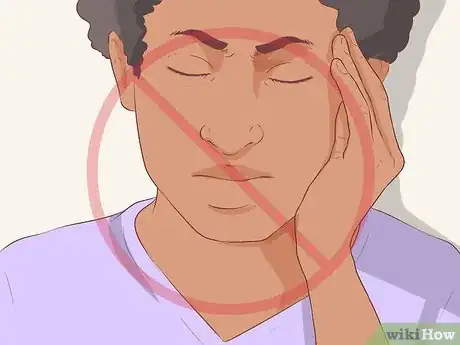
























































Medical Disclaimer
The content of this article is not intended to be a substitute for professional medical advice, examination, diagnosis, or treatment. You should always contact your doctor or other qualified healthcare professional before starting, changing, or stopping any kind of health treatment.
Read More...